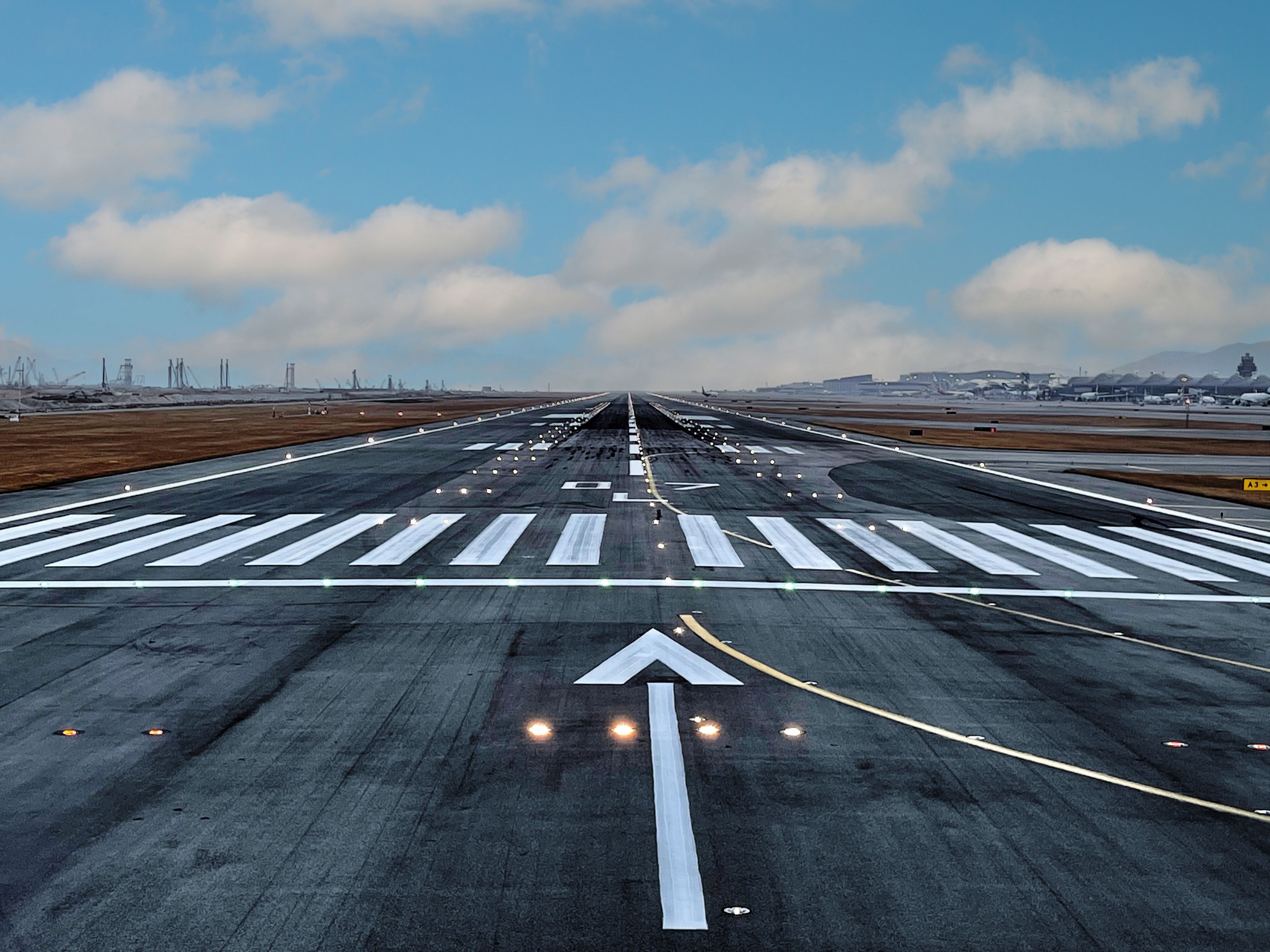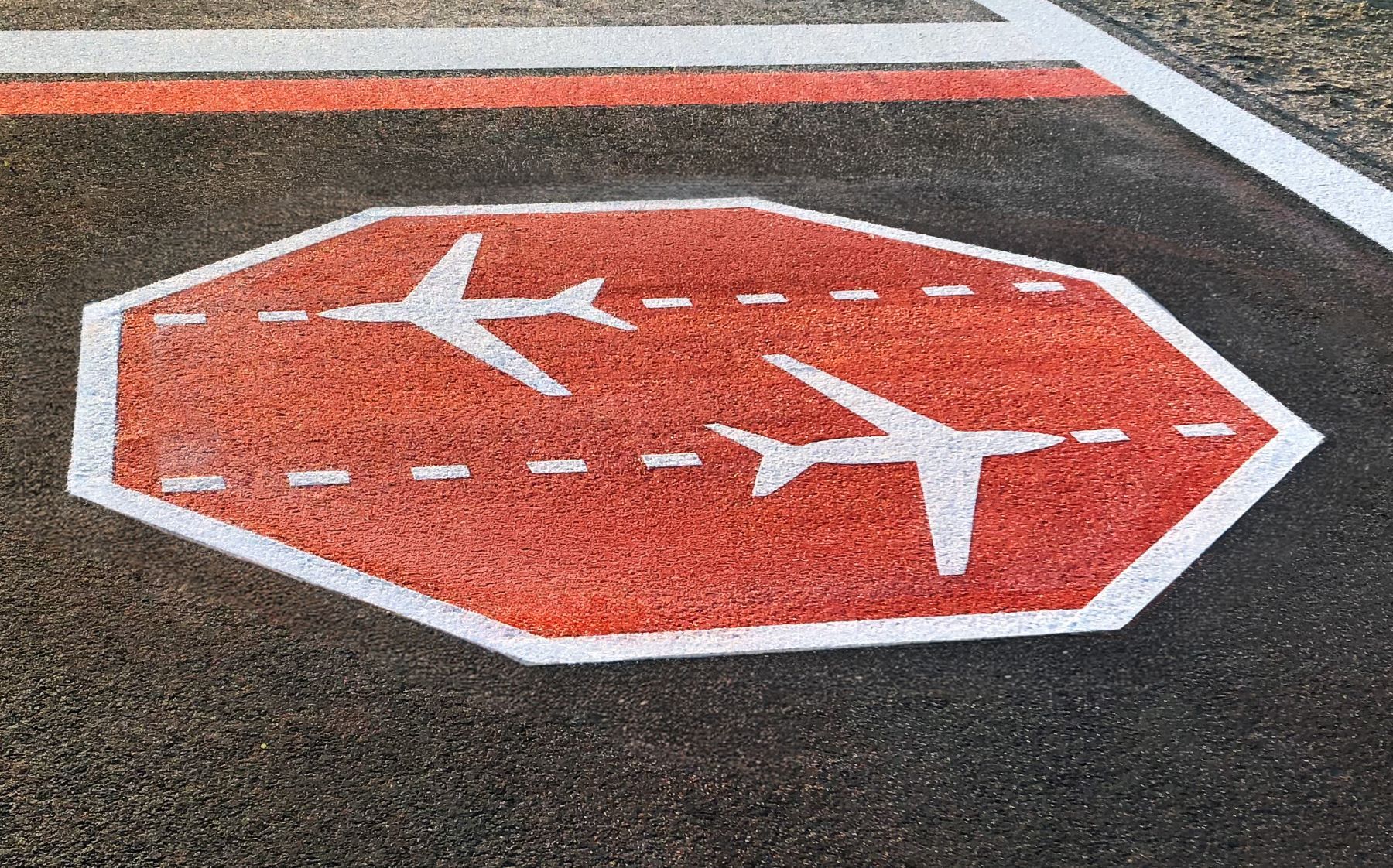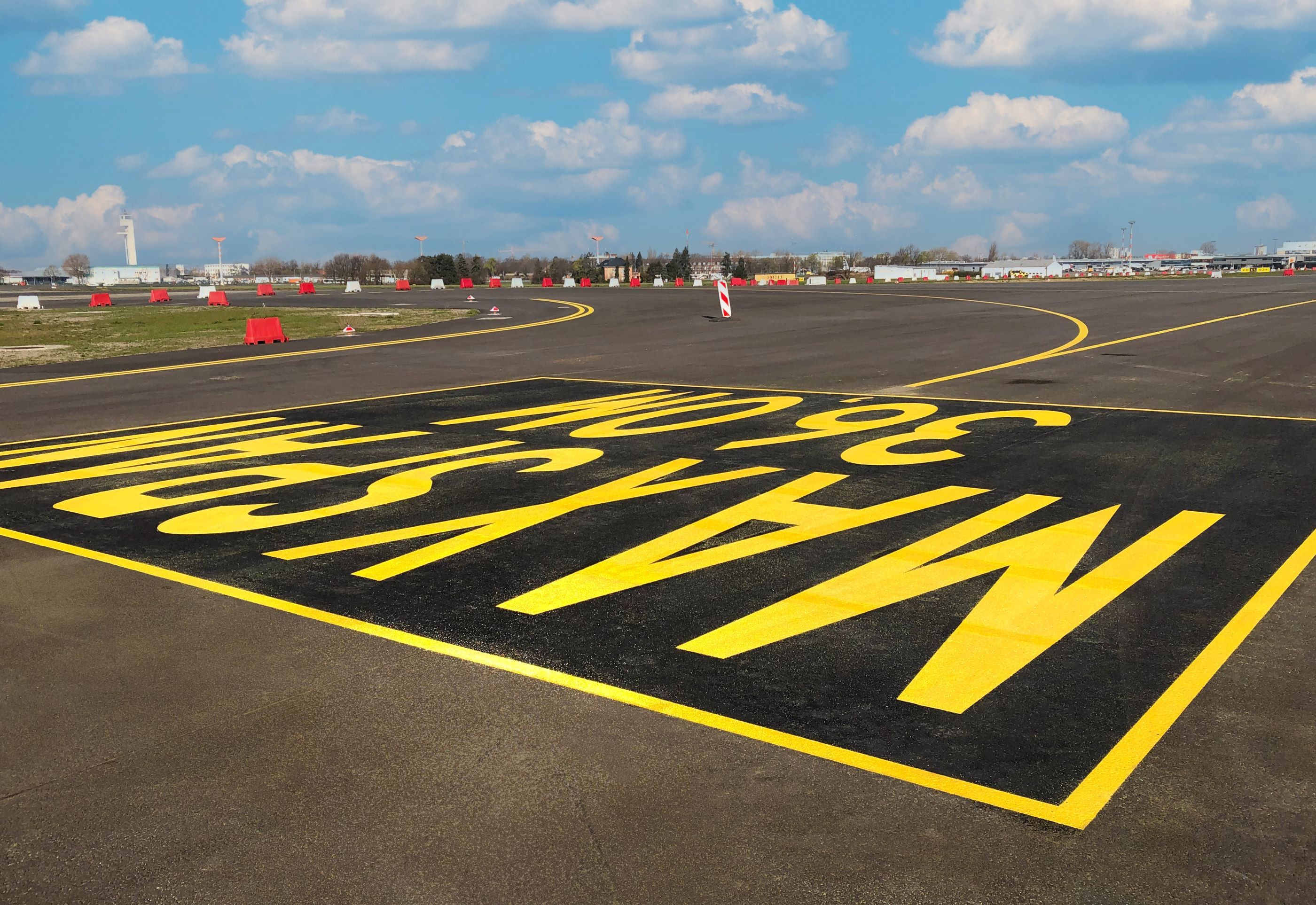Airport Markings: Balancing Standards and Environmental Considerations
Markings at airports must comply with precise international standards to ensure maximum visibility and safety. Environmental considerations are also playing an increasingly important role in the choice of marking materials.
Airports are high-security areas – this applies to both the airspace and the ground. Take-offs, landings, manoeuvres, and a huge number of ground vehicles require a perfectly functioning traffic area throughout the entire airport. As in road traffic, pavement markings are of essential importance here. They serve as visual guides, helping pilots navigate the runways and the paths between them. This is the only way to ensure the smooth operation of the entire airfield. What at first glance may appear to be simple lines on tarmac surfaces is subject to the strictest international standards – and is increasingly becoming a focus of environmental sustainability.

Specific requirements apply to markings at airports, for example, those issued by the International Civil Aviation Organisation (ICAO), the European Union Aviation Safety Agency (EASA), or the American Federal Aviation Administration (FAA). They define, for instance, the exact use, size, and positioning of markings. There are also clear regulations regarding the colours of markings, as each colour has a specific function and should be clearly recognisable at all airports.
‘For example, white is the standard colour for runway markings,’ explains Markus Madner, an expert on airport markings at SWARCO Road Marking Systems. ‘Internationally, yellow markings are used on taxiways and parking areas. Red often indicates areas where certain activities are prohibited or where warnings apply, such as waiting positions on runways. In addition to the actual marking material, the use of coloured glass granulate can also improve the contrast effect, thereby enhance the visibility of the markings and extending their UV stability.’

Markus Madner
SWARCO Road Marking Systems
expert on Airport Markings
"One trend we can observe is the increased use of water-based marking systems. This is particularly true for low-traffic areas such as aprons and parking positions. Until now, solvent-based products have mainly been used, but these release volatile organic compounds (VOCs). Today, low-emission materials such as water-based paints come increasingly into use."
Special requirements for marking materials
These colour codes must be stable in order to fulfil their purpose over a long period of time. This means that marking materials must adhere well to various surfaces. Excellent retroreflection for nighttime visibility is also required. In addition, markings have to be resistant to various types of brake and hydraulic fluids and demonstrate extreme abrasion resistance, as aircraft touch down with enormous impact. To meet these requirements, high-quality materials are needed at airports around the world.
High-index reflective beads for extra safety
Glass beads are also used in airport markings to achieve the required reflectivity. However, compared to reflective glass beads used on roads, these have a higher refractive index to ensure maximum visibility of the pavement markings for pilots in the cockpit. PLUS9BEADS made by SWARCO meet the high demands placed on modern airport infrastructure, explains Markus Madner: ‘The specially developed glass composition made from high-quality raw materials is manufactured exclusively for airports. Our high-index airport beads have a refractive index of at least 1.9 and achieve retro-reflection values of up to 1,500 mcd/m²*lx.’ As a result, PLUS9BEADS offer excellent visibility even under the most demanding light and weather conditions. Their strengths are particularly impressive in darkness, rain or fog – and are already contributing to increased safety at numerous airports worldwide.
Focus shifts to sustainability
Safety is clearly the top priority at airports, but in recent years, environmental considerations have also become more and more important. Safety requirements always come first. Nevertheless, airports around the world are looking for ways to use materials that conserve resources and reduce CO₂ emissions and microplastics. Modern airport markings can contribute to helping achieve this, as Markus Madner knows: ‘One trend we can observe is the increased use of water-based marking systems. This is particularly true for low-traffic areas such as aprons and parking positions. Until now, solvent-based products have mainly been used, but these release volatile organic compounds (VOCs). Today, low-emission materials such as water-based paints come increasingly into use.’
The ecological transformation of air transport, therefore, does not begin in the aircraft, but already on the tarmac. With the necessary expertise, SWARCO helps to combine the highest safety requirements with modern environmental responsibility in order to implement modern airport markings on parking areas, runways, and take-off and landing strips. Advanced materials, precise standards, and a growing awareness of sustainability make them a key component for the more environmentally sound airport of tomorrow.
FAQs
SWARCO airport marking solutions are used at numerous airports worldwide. The portfolio primarily includes various marking materials – from water-based paints to high-solid systems – and high-index reflective glass beads for optimised visibility in difficult lighting conditions. The marking systems are optimally adapted to different climatic conditions. SWARCO also provides coordinated glass granules to enhance the contrast effect.
The marking systems comply with international standards such as ICAO Annex 14, STANAG 3711, TT-B 1325D and TT-P 1952F.
In addition to selecting the appropriate material, it is crucial to have the relevant expertise in marking processes and application techniques.
PLUS9BEADS are high-index reflective glass beads with a refractive index of ≥ 1.9. They enable retroreflection values of up to 1,500 mcd/m²/lx.
High retroreflection ensures that markings are clearly visible from the cockpit at an early stage in darkness, rain or fog. This makes a significant contribution to aviation safety.
About SWARCO Road Marking Systems
Quality products and services from SWARCO Road Marking Systems guide traffic safely from A to B by day and, above all, by night. On all types of roads. Whatever the weather. From a single source. Over 5,000 customers in more than 80 countries place their trust in them.




